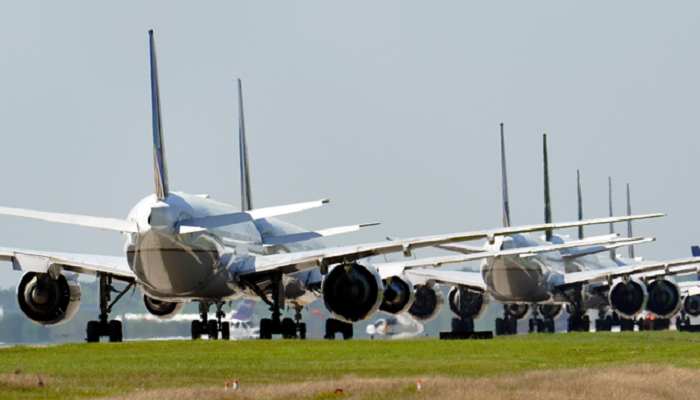US orders extra scrutiny of Boeing 777s with same type of engine that failed on United Airlines flight forcing return to Denver airport.
United States aviation regulators announced extra inspections of Boeing Co’s 777 jets using the same type of engine that shed debris over Denver on Saturday, while Japan went further and suspended their use while it considers what action to take.
The regulatory moves involving planes with Pratt & Whitney 4000 engines came after a United Airlines 777 returned safely to Denver International Airport on Saturday after its right engine failed.
Boeing backs fuel efficiency standards for new aircraft
The incident on United Airlines Flight 328 from Denver to Honolulu took place shortly after it took off with 231 passengers and 10 crew members. The plane landed safely back in Denver.

United said on Sunday it would voluntarily and temporarily remove its 24 active planes of the same type from its schedule.
Images posted by police in Broomfield, Colorado showed significant plane debris on the ground, including an engine cowling scattered outside a home and what appeared to be other parts in a field.
The National Transportation Safety Board (NTSB) said its initial examination of the plane indicated most of the damage was confined to the right engine, with only minor damage to the rest of the aircraft.
It said the inlet and casing separated from the engine and two fan blades were fractured while the remainder of the fan blades exhibited damage.
Boeing record annual loss cause again delays in new 777X jet
The crack that led the fan blade to break on the United flight on Saturday was similar to one that occurred on a 2018 United flight, a person familiar with the preliminary investigation results who was not authorised to discuss them told the Bloomberg news agency.
In the latest failure, one fan blade cracked and broke off near where it attached to a rotating hub, according to the person. A second blade was also broken, apparently after it was struck by the first blade.
The fan blades on this specific type of PW4000 are hollow and made of titanium. The cracks appear to start from within the surface, making them impossible to detect on the surface. Airlines can use technologies such as ultrasound to find cracks beneath the surface.
Japan’s transport ministry ordered Japan Airlines Co Ltd (JAL) and ANA Holdings Inc to suspend the use of 777s with PW4000 engines while it considered whether to take additional measures.
The ministry said that on December 4, 2020, a JAL flight from Naha Airport to Tokyo International Airport returned to Naha due to a malfunction in the left engine.
That plane is the same age as the 26-year-old United Airlines aircraft involved in Saturday’s incident.
United is the only US operator of the planes with this type of engine, according to the Federal Aviation Administration (FAA). The other airlines using them are in Japan and South Korea, the US agency said.
“We reviewed all available safety data following yesterday’s incident,” the FAA said in a statement. “Based on the initial information, we concluded that the inspection interval should be stepped up for the hollow fan blades that are unique to this model of engine, used solely on Boeing 777 airplanes.”
Pratt & Whitney, owned by Raytheon Technologies Corp, was not available immediately for comment.
Boeing posts first loss in two decades
Boeing said its technical advisers are supporting the NTSB with its investigation.
The planemaker also said on Monday it recommends “suspending operations of the 69 in-service and 59 in-storage 777s powered by Pratt & Whitney 4000-112 engines until the Federal Aviation Administration (FAA) identifies the appropriate inspection protocol.”
A spokeswoman for South Korea’s transport ministry said it was monitoring the situation but had not yet taken any action.
Korean Air Lines Co Ltd said it had 16 of the planes, 10 of them stored, and it would consult with the manufacturer and regulators and stop flying them to Japan for now.
In February 2018, a 777 of the same age operated by United and bound for Honolulu suffered an engine failure when a cowling fell off about 30 minutes before the plane landed safely. The NTSB determined that incident was the result of a full-length fan blade fracture.
Because of that 2018 incident, Pratt & Whitney reviewed inspection records for all previously inspected PW4000 fan blades, the NTSB said. The FAA in March 2019 issued a directive requiring initial and recurring inspections of the fan blades on the PW4000 engines.



